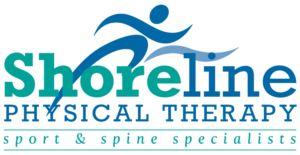The McKenzie Method of Mechanical Diagnosis and Therapy (MDT) is world-renowned for the assessment and treatment of musculoskeletal disorders and has been widely used for more than 50 years. If a problem exists in or around the spine or peripheral joint, an MDT evaluation may be appropriate. The assessment process is safe and reliable, and it allows the clinician to reach an accurate diagnosis which then leads to the appropriate, most effective treatment plan. In fact, 80% of the time, and accurate MDT assessment will reveal simple patterns of movement that will rapidly reduce a patient’s pain and improve daily function with most of the improvement occurring in the first 2 weeks of treatment. These results are possible even in the presence of abnormal MRI findings or chronic pain.
Assessment:
The assessment provides a rational guide to classify the presenting musculoskeletal disorder into a mechanical sub-classification. Proper classification is essential to determine the most optimal treatment strategy for the patient. First the clinician will carefully and thoroughly listen to the patient describe the symptoms they are having in order to understand the exact location of pain and determine what activities and positions make the patient better or worse. This information guides the clinician during the rest of the assessment and gives the clinician an understanding of how the pain is limiting the patient’s daily activity and quality of life. Next, the clinician will perform a response-based assessment by guiding the patient through a series of simple, repeated movements.
During the response-based assessment, the clinician is able to identify patterns of changes in movement and pain that can be used to categorize the problem into the appropriate sub-classification. These patterns are reproducible, objective, reliable, and reflect the characteristics of the underlying pain generator. Furthermore, this response-based assessment is performed at each subsequent visit to detect changes in the patient’s presentation and further guide treatment progression.
Treatment:
Using the information gathered during the assessment, the clinician will prescribe specific exercises for the patient to perform at home and will instruct the patient on certain movements and postures to avoid. MDT treatment focuses on teaching the patient how to treat themselves with movement several times a day. Follow-up visits in the clinic are designed to re-assess the patient’s response to self-treatment and make the appropriate progressions to further improve their condition. Typically, patients are able to successfully treat themselves when given the necessary knowledge and tools. However, when these mechanical problems are more severe, it may be necessary for the clinician to utilize more hands-on techniques until the patient is able to better self-manage the condition.
Additionally, as patients improve they are given specific strengthening programs to improve function at home and work. In cases when a patient does not respond mechanically, alternative means of treatment or further medical evaluation are warranted. Treatment using MDT is centered around you, the patient, being actively involved. When a patient is treating themselves five or six times daily, they are more likely to resolve their problem in a much shorter period of time than they would if they were being seen in the clinic two or three days a week without self-treatment. Not only does MDT treatment result in a more rapid recovery (remember a majority of patients can rapidly reduce their pain in as little as 2 weeks), it also can substantially reduce the costs associated with care ( clinic visits, less out of pocket expense to the patient, less need for further expensive imaging studies).
Prevention:

As previously stated, most patients who respond favorably to the McKenzie Method can successfully treat themselves. By learning how to self-treat the current problem, patients gain hands-on knowledge on how to minimize the risk of recurrence and how to quickly manage themselves if symptoms do recur. Before discharge from physical therapy, patients are taught simple prophylactic exercises and postures that can reduce the chance of the symptoms returning substantially. In addition, the therapists at Shoreline Physical Therapy are always available after discharge to help the patient troubleshoot any future issues.
The goals of the McKenzie Method are to:
- Reduce pain and deformity
- Maintain the reduction with education and posture advice
- Restore full function
- Prevent recurrences
The McKenzie Method Treats:
Utilizing the McKenzie Method, we are able to successfully treat most musculoskeletal disorders including:
- Acute or chronic neck and back pain
- Herniated “slipped” discs
- Degenerative disc disease
- Degenerative arthritis
- Sciatica
- Stenosis
- Radiculopathy (pain radiating down the arm or leg)
- Degenerative Joint Disease
- Upper and lower extremity joint pain and ROM loss
- Tendinitis
For more information, Contact us at our Wilmington, NC location.
Your Next Steps…
Request An Appointment
Receive A Custom Treatment Plan
Work Hard and Progress In Your Recovery
Recover & Enjoy Life Pain-Free!

